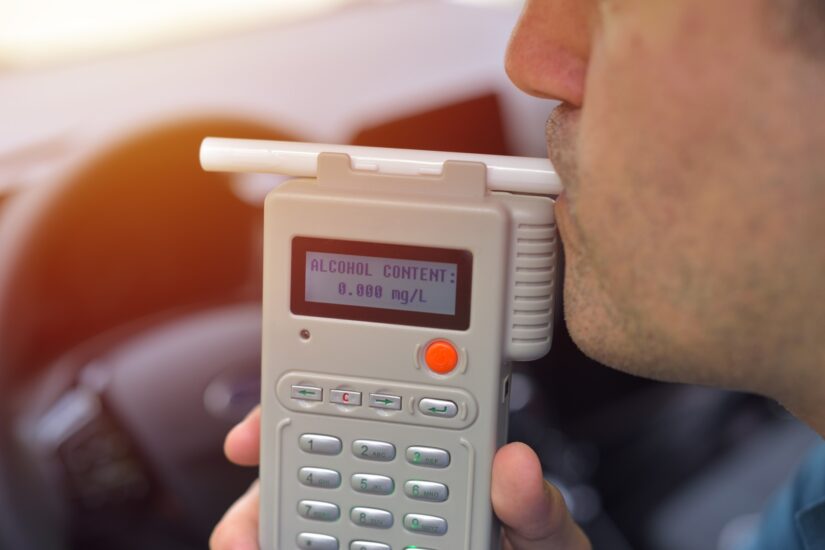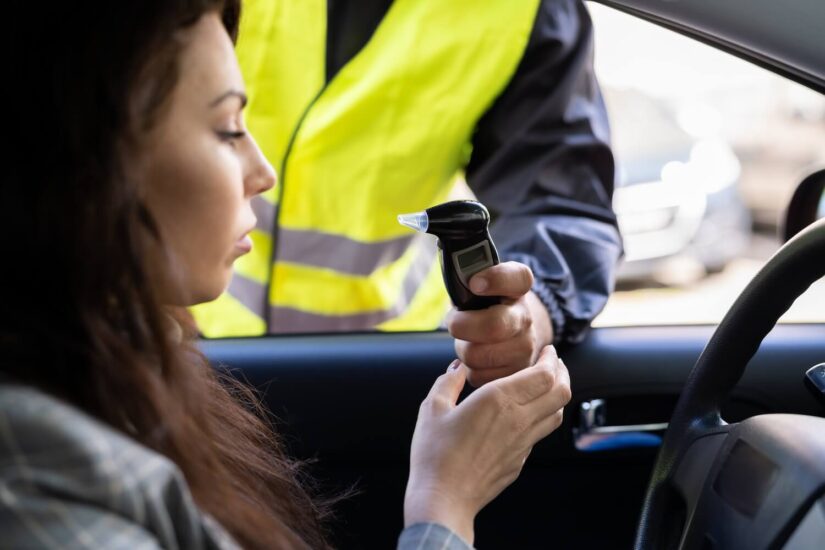
August 26, 2025
Breathalyzers are not foolproof. They can be triggered by substances and factors unrelated to alcohol, potentially leading to false positives. Here’s what you need to know:
- Medications: Asthma inhalers, NyQuil, and oral gels like Anbesol contain alcohol or compounds that mimic it, skewing results.
- Foods & Drinks: Fermented foods (sauerkraut, kimchi), overripe fruits, energy drinks, and kombucha can register alcohol traces.
- Hygiene Products: Alcohol-based mouthwashes and sprays can temporarily elevate readings.
- Medical Conditions: Diabetes (ketoacidosis), GERD, and rare conditions like auto-brewery syndrome can interfere with accuracy.
- External Factors: Fumes from cleaning products, paint, and gasoline can mimic alcohol molecules.
Understanding these triggers can help you contest inaccurate results, especially in states like Texas where DUI penalties are severe. If you suspect a false positive, document exposures, request a blood test, and consult an attorney immediately.
Substances That Can Cause False Positive Breathalyzer Results
Everyday substances can sometimes interfere with breathalyzer accuracy, leading to readings that suggest alcohol consumption even when none has occurred. This often happens because these substances either contain alcohol or produce chemical compounds that breathalyzers mistake for ethanol.
Medications
Certain medications can cause false positives on a breathalyzer. For example, asthma inhalers, which may contain up to 34% alcohol, and over-the-counter remedies like NyQuil are known culprits. A study in Spain tested popular inhalers and found that salbutamol, salmeterol, and budesonide inhalers produced notable alcohol readings—0.45, 0.44, and 0.32 mg of alcohol per liter of air, respectively—just one minute after use. Even three minutes later, traces were still detectable.
Oral pain relief gels, such as Anbesol, can also trigger high readings due to their alcohol content, which can be as high as 70%. Additionally, some sleeping aids and other medications may interfere with breathalyzer results. It’s important to note that breathalyzers detect various alcohol compounds, not just those from alcoholic beverages.
Foods and Beverages
What you eat and drink can also influence breathalyzer results, even if you haven’t consumed alcohol. Fermented foods like sauerkraut, kimchi, and pickled vegetables naturally contain small amounts of ethanol due to the fermentation process. Similarly, overripe fruits such as bananas can have trace ethanol levels (up to 0.4%) from natural fermentation.
Energy drinks are another surprising source of interference. Research shows that about 40% of participants in one study registered false BAC readings after consuming products with small amounts of ethanol. Kombucha, a popular health drink, often contains between 0.5% and 2% ABV in commercial brands, which can affect test results if consumed shortly before testing. Even common cooking ingredients like vanilla extract—required to contain at least 35% ethanol in its pure form in the U.S.—or dishes prepared with wine or beer can leave behind alcohol residues that might impact breathalyzer readings.
These examples show how everyday dietary choices can unexpectedly influence breathalyzer results, which could be a critical point in a DWI defense.
Mouthwash and Hygiene Products
Alcohol-based mouthwashes and breath sprays are another frequent source of false positives. Many popular mouthwash brands contain surprisingly high levels of alcohol. For instance, Original Listerine has 26.9% alcohol, Mint Listerine contains nearly 22%, Scope has 18.9%, and Cepacol clocks in at around 14%.
Studies reveal that alcohol from mouthwash peaks within two minutes of use but typically dissipates to safe levels by the ten-minute mark. To minimize the risk of a false reading, consider using alcohol-free alternatives or waiting at least 15 minutes after using mouthwash before driving—especially if your car has an ignition interlock device. If you’ve recently used products containing alcohol, it’s also a good idea to inform the test administrator.
These examples highlight how everyday substances can complicate breathalyzer results, which may play a significant role in DWI defense strategies in Texas.

Medical Conditions That Affect Breathalyzer Results
Certain medical conditions can skew breathalyzer readings, sometimes leading to false positives. This happens because some health issues cause the body to produce compounds that breathalyzers mistake for alcohol. Understanding these medical factors is crucial, especially when building a defense against DWI charges in Texas.
Diabetes and Ketoacidosis
Diabetic ketoacidosis (DKA) is one condition that can interfere with breathalyzer accuracy. When the body lacks glucose, it burns fat for energy, producing ketones like acetone. Breathalyzers can misinterpret acetone as alcohol. While DKA is more common in individuals with Type 1 diabetes, it can also occur in those with Type 2 diabetes, which affects about 10% of Americans. Additionally, symptoms of hypoglycemia—such as confusion, slurred speech, and shakiness—can resemble alcohol impairment, often prompting breathalyzer tests.
A striking example was reported by Medscape in July 2024: a Type 1 diabetic who hadn’t eaten became ketotic and failed a breathalyzer test after a car accident, despite not consuming any alcohol. Research indicates that acetone in the breath can artificially increase a BAC reading by as much as 0.06%. This issue is particularly problematic with semiconductor-based breathalyzers, which are more prone to such errors compared to fuel cell or infrared spectroscopy devices.
Gastroesophageal Reflux Disease (GERD)
GERD, a condition affecting around 7–10% of Americans, can also compromise breathalyzer results. In GERD sufferers, acid and vapors can reflux into the mouth, contaminating the breath sample. Since breathalyzers are designed to measure alcohol from deep lung air, this contamination can lead to inaccurate readings. Consuming carbonated drinks like beer, white wine, or mixed beverages can worsen GERD symptoms and increase the likelihood of false positives.
In one notable case in Mission, Texas, a man was acquitted of DUI charges after his attorney successfully argued that acid reflux had caused a false positive on the breathalyzer. Such cases highlight how medical evidence can be used to challenge the reliability of these tests.
Other Health Factors
Other medical conditions can also lead to misleading breathalyzer results. Auto-brewery syndrome, a rare disorder, causes the body to produce alcohol internally, potentially leading to a positive reading even without alcohol consumption. Factors like poor oral hygiene, dental appliances, or respiratory issues such as asthma can further distort results.
If you have a medical condition that might affect breathalyzer accuracy and you’re facing a DWI charge, it’s important to inform law enforcement at the time of the stop. Requesting a blood test—which tends to be more accurate—and carrying documentation of your condition can make a big difference. Given that breathalyzers can have a margin of error of up to ±0.01% BAC, consulting with a DUI attorney familiar with these medical factors is essential for protecting your rights in Texas.
Outside Factors That Impact Breathalyzer Tests
External substances and environmental conditions can sometimes lead to false positives on breathalyzer tests. Recognizing these factors is key when challenging inaccurate BAC readings in DWI cases.
Cleaning Products and Fumes
Alcohol-based cleaning products, adhesives, and solvents can leave behind residues on your skin, lips, or clothing, potentially causing false positives. In certain workplaces, exposure to chemicals like paint fumes or gasoline vapors can mimic alcohol molecules and interfere with breathalyzer sensors. Workers in poorly ventilated areas with frequent exposure to these fumes—such as auto mechanics or gas station attendants—are especially at risk for inaccurate BAC readings.
Even something as common as hand sanitizer can release vapors that elevate BAC readings. Furthermore, alcohol residue in the mouth can make it even harder to get an accurate result.
Residual Mouth Alcohol
Everyday products like mouthwash and breath sprays often contain high levels of alcohol—sometimes as much as 27%—which – which can skew test results if used shortly before a breathalyzer is administered.
To address this, proper testing protocols require officers to observe a waiting period before conducting a breathalyzer test. In Virginia, for example, case law recommends a minimum 15-minute observation period to allow residual mouth alcohol to dissipate. In some areas, officers extend this waiting time to 15–20 minutes to account for activities like eating, drinking, or smoking, which can also affect accuracy. Additionally, environmental factors like extreme heat or humidity can interfere with a breathalyzer’s performance.
If you’ve recently been exposed to alcohol-based products, chemical fumes, or used alcohol-containing hygiene items before testing, documenting these exposures promptly can be critical for your defense. Knowing how these external factors can influence results is crucial when facing DWI charges in Texas.

How This Affects Your DWI Defense in Texas
When fighting DWI charges in Texas, understanding how non-alcohol factors can lead to false breathalyzer readings is a game-changer. Documenting these factors can cast doubt on BAC results, potentially reducing charges or even getting the case dismissed.
Documenting Non-Alcohol Factors
After an arrest, it’s essential to note any details that might explain inaccurate BAC results – this includes medical conditions, medications, recent food or drink, or exposure to certain chemicals. For instance, conditions like diabetes or acid reflux can artificially inflate breathalyzer readings. Even factors like dehydration, fatigue, or prolonged sun exposure can mimic signs of intoxication. Some medications may also interfere with the accuracy of breathalyzer devices, leading to falsely high BAC levels. This information is critical for building a defense strategy that challenges the validity of the test results.
How Lawyers Dispute Breathalyzer Results
Using documented evidence, attorneys can question the reliability of breathalyzer tests by focusing on device maintenance, testing procedures, and external factors. The attorneys at The Napier Law Firm, for example, carefully analyze these aspects to create a defense tailored to the specifics of each case.
Defense lawyers dig into whether the breathalyzer was properly calibrated and maintained, as Texas law requires regular checks to ensure accuracy. If maintenance records reveal lapses in these procedures, it could be grounds to question the test results. Additionally, they may investigate whether the operator followed correct protocols during the test.
Attorneys may also explore alternative explanations for elevated BAC levels, such as specific diets or health issues. They might challenge the legality of the traffic stop and the search and seizure process or argue that the prosecution failed to prove intoxication beyond a reasonable doubt. Expert witnesses, such as forensic toxicologists, can provide testimony on potential errors or irregularities in the testing process.
With Texas’s legal BAC limit set at 0.08% for most drivers, the consequences of a DWI conviction—fines, license suspension, or jail time—are serious. It’s crucial to act quickly and consult an attorney to protect your rights and build a strong defense while evidence is still fresh. Skilled legal representation can make all the difference in safeguarding your future.